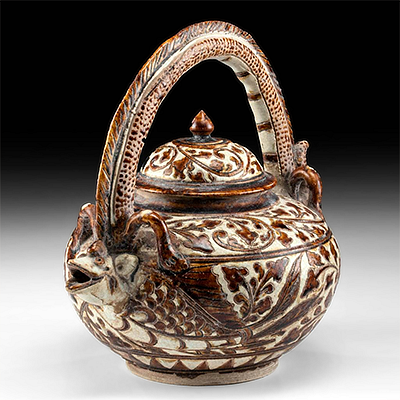19th C. Dogon Wood Figure
Lot 131
About Seller
Artemis Gallery
686 S Taylor Ave, Ste 106
Louisville, CO 80027
United States
Selling antiquities, ancient and ethnographic art online since 1993, Artemis Gallery specializes in Classical Antiquities (Egyptian, Greek, Roman, Near Eastern), Asian, Pre-Columbian, African / Tribal / Oceanographic art. Our extensive inventory includes pottery, stone, metal, wood, glass and textil...Read more
Categories
Estimate:
$800 - $1,200
Absentee vs Live bid
Two ways to bid:
- Leave a max absentee bid and the platform will bid on your behalf up to your maximum bid during the live auction.
- Bid live during the auction and your bids will be submitted real-time to the auctioneer.
Bid Increments
| Price | Bid Increment |
|---|---|
| $0 | $25 |
| $300 | $50 |
| $1,000 | $100 |
| $2,000 | $250 |
| $5,000 | $500 |
| $10,000 | $1,000 |
| $20,000 | $2,500 |
| $50,000 | $5,000 |
| $100,000 | $10,000 |
| $200,000 | $20,000 |
About Auction
By Artemis Gallery
Jul 1, 2021
Set Reminder
2021-07-01 10:00:00
2021-07-01 10:00:00
America/New_York
Bidsquare
Bidsquare : Antiquities | Asian | Ethnographic Art
https://www.bidsquare.com/auctions/artemis-gallery/antiquities-asian-ethnographic-art-7148
Featuring classical antiquities, ancient and ethnographic art from cultures encompassing the globe. Egyptian, Greek, Roman, Near Eastern, Asian, Pre-Columbian, Native American, African / Tribal, Oceanic, Spanish Colonial, Russian, Fossils, Fine Art, more! All legally acquired, legal to sell. Artemis Gallery info@artemisgallery.com
Featuring classical antiquities, ancient and ethnographic art from cultures encompassing the globe. Egyptian, Greek, Roman, Near Eastern, Asian, Pre-Columbian, Native American, African / Tribal, Oceanic, Spanish Colonial, Russian, Fossils, Fine Art, more! All legally acquired, legal to sell. Artemis Gallery info@artemisgallery.com
- Lot Description
West Africa, Central Mali, Dogon peoples, ca. 1890s CE. A hand-carved wooden figure of a male shown from the waist up with his arms resting to his sides and his hands folded at his waist. Presenting a bulbous chest, a lengthy body, and a raised navel, the stylized figure features an elongated head displaying annular eyes under a straight brow, a down-pointed nose, and full lips. Size: 2.4" W x 13" H (6.1 cm x 33 cm); 19.625" H (49.8 cm) on included custom stand.
The Dogon people inhabit the rocky heights of Mali's Bandiagara Escarpment. Wooden figures, such as this example, are traditionally created for shrines and depict the spirits responsible for the fertility of both the land and the Dogon people, such as the family's real and mythical ancestors, women who have died in childbirth, and water spirits.
Note the rich patina throughout this piece. According to Giulia Paoletti, Andrew W. Mellon Curatorial Postdoctoral Fellow at the Metropolitan Museum of Art, "Among the Dogon the patina played the role of receptacle for nyama, or life force. Without this substance and its ritual appliance, the statue would be a mere piece of wood devoid of any protective power. The patina thus becomes a crucial component in appreciating this sculpture and its ceremonial significance."
Provenance: private Houston, Texas, USA collection, purchased from Julie Carson at Carson Gallery, St. Thomas, Virgin Islands
All items legal to buy/sell under U.S. Statute covering cultural patrimony Code 2600, CHAPTER 14, and are guaranteed to be as described or your money back.
A Certificate of Authenticity will accompany all winning bids.
We ship worldwide and handle all shipping in-house for your convenience.
#162912Missing legs. Losses to left arm, top of head, and stomach. Vertical fissures down sides and across face. Expected nicks/chips and abrasions commensurate with age. Otherwise, very nice with light earthen deposits in recessed areas and rich patina.Condition
- Shipping Info
-
All shipping is handled in-house for your convenience. Your invoice from Artemis Gallery will include shipping calculation instructions. If in doubt, please inquire BEFORE bidding for estimated shipping costs for individual items.
-
- Buyer's Premium



 EUR
EUR CAD
CAD AUD
AUD GBP
GBP MXN
MXN HKD
HKD CNY
CNY MYR
MYR SEK
SEK SGD
SGD CHF
CHF THB
THB













